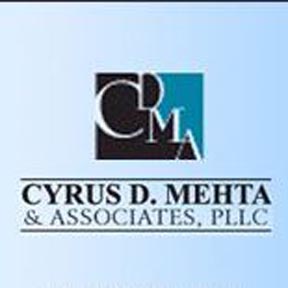 All the forces in the world are not so powerful as an idea whose time has come.-Victor Hugo Sometimes it takes a while for a sound idea to gain acceptance. Granting employment authorization to H-4 spouses of H-1B visa holders is a good example. It is in line with the policies of other countries, and if the United States wishes to attract the brightest and the best, such an individual may be dissuaded from coming to the United States if the spouse is not allowed to work. This is especially true if the H-1B workers have to wait for several years before they and their families can apply for permanent residency.
All the forces in the world are not so powerful as an idea whose time has come.-Victor Hugo Sometimes it takes a while for a sound idea to gain acceptance. Granting employment authorization to H-4 spouses of H-1B visa holders is a good example. It is in line with the policies of other countries, and if the United States wishes to attract the brightest and the best, such an individual may be dissuaded from coming to the United States if the spouse is not allowed to work. This is especially true if the H-1B workers have to wait for several years before they and their families can apply for permanent residency.
Almost 4 years ago, then USCIS General Counsel Roxanna Bacon, Service Center Operations Head Donald Neufeld and Field Operations Chief Debra Rogers recommended that H-4 spouses be granted employment authorization to USCIS Director Alejandro Mayorkas, but only for those “H-4 dependent spouses of H-1B principals where the principals are also applicants for lawful permanent residence under AC 21” – Memorandum, Administrative Alternatives to Comprehensive Immigration Reform. The memo was leaked by those who wanted to defeat any administrative initiatives and they did so. There matters stood until January 31, 2012 when the Department of Homeland Security brought this idea back to life.
On May 6, 2014, the Department of Homeland Security (DHS) announced that it would allow certain H-4 spouses to obtain employment authorization. The proposed rule provides that an H-4 spouse may apply for employment authorization if the principal H-1B spouse is the beneficiary of an approved I-140 immigrant petition; or, if the H-1B spouse been granted an extension of beyond the 6-year limitation pursuant to section 106(a) of the American Competitiveness in the Twenty-first Century Act of 2000 (AC21). Under section 106(a) of AC 21, the filing of a labor certification or employment-based immigrant visa petitions 365 days prior to the sixth year allows the H-1B worker to apply for an additional year be yond the sixth year.
In Tyranny of Priority Dates and subsequent articles (http://www.cyrusmehta.com), we pointed out the long delays befalling skilled immigrants due to the backlogs in the priority dates, and proposed remedial measures, including the ability of an H-4 spouse to work. Our prior analysis of H-4 spousal employment (February 5, 2012 at http://www.cyrusmehta.com) and earlier indications that the USCIS recognized the problem and intended to do something about it provide a helpful context against which the importance of this latest development can be measured.
The proposed rule to grant work authorization to H-4 spouses is much welcomed recognition of this problem. It acknowledges the contributions of foreign born immigrants, especially in the tech industry, and cites the findings of Vivek Wadhwa that in 25% of tech companies founded between 1995-2005, the chief executive or lead technologist was foreign born. Indeed, the preamble to the proposed rule acknowledges that certain beneficiaries of I-140 petitions under the India EB-3 preference may have to wait over 10 years to obtain permanent residence.
In the meantime, the H-4 spouse cannot seek employment, and is also prohibited from other work related activities such as engaging in self-employment through a home based business. While only Congress could create new visa categories, we argued that the Executive under section 103(a) of the Immigration and Nationality Act was charged with the administration and enforcement of the INA.
Also, the Executive had authority to grant work authorization to any aliens under INA section 274A (h) (3). Under these provisions, we had proposed that the Executive could provide relief for beneficiaries, including spouses, of approved I-130 and I-140 petitions through the grant of employment authorization who were caught in the crushing backlogs. After all, these people were in the pipeline for the green card, but for the backlogs in the priority dates. The H-1B visa also allows for “dual intent,” as it permits one to apply for permanent residency even though it is technically a nonimmigrant visa.
The proposed rule now recognizes, as we did in The Tyranny of Priority Dates, the ability of the Executive to pass ameliorative measures in the face of crushing delays for those in the green card queue. While Congress has still not been able to pass a reform of the broken immigration system, the proposed rule further acknowledges that the Executive has the legal authority to authorize spousal employment pursuant to INA sections 103(1) and 274A (h)(3).
Resting on this foundation, the proposed rule further relies on INA sections 214(a) (1), which authorizes the Executive to prescribe regulations setting forth terms and conditions with respect to the admission of nonimmigrants into the United States. Recognizing that H-1B workers and their spouses would be green card holders but for the backlogs in the priority dates, Commerce Secretary appropriately stated, “These individuals are American families in waiting.”
The granting of work authorization to H-4 spouses if the principal spouse has applied for an AC 21 extension also resolves the conundrum when both spouses are on H-1B visas and are reaching the sixth year on their H-1B visas. Under this situation, the spouse who was not the subject of a labor certification was generally forced to switch to H-4 status, and was then prohibited from continuing employment.
In Two H-1B Spouses: One Labor or Certification (http://www.cyrusmehta.com) we advocated how both spouses could take advantage of the labor certification filed on behalf of one of the spouses in order to get a seventh year extension. While there is a sound basis to argue that AC 21 would benefit the spouse who was relying on the labor certification filed on behalf of the labor certification, since this is the basis for their adjustment of status, the USCIS did not always interpret AC 21 section 106(a) broadly to benefit both spouses.
Now, thankfully, this uncertainty will no longer exist. The spouse who is not the subject of the labor certification can switch to H-4 status and can still apply for work authorization. At the same time, we still advocate that a spouse on an H-1B visa be able to rely on the other spouse’s labor certification or I-140 to seek an H-1B extension beyond the sixth year limitation. There will be occasions when it is more expeditious for the spouse to file an H-1B extension and continue working, rather than file for a change of status to H-4 and then apply for an employment authorization document before re-starting work again. This is an excellent illustration of how doctrinal clarity by the USCIS can promote robust operational flexibility by aliens and their advocates.
To be continued
Gary Endelman & Cyrus D. Mehta






